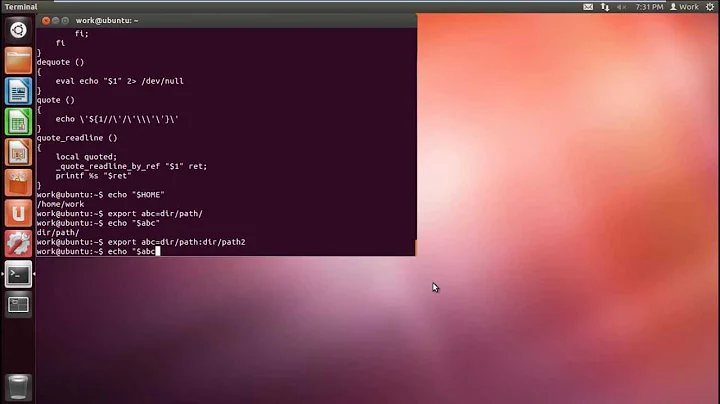How to set `screen` environment variable from bash?
If I understand correctly, your problem is you cannot find a way to use a shell alias to interact with screen directly. Instead, you can send commands to a running screen using -X, including setenv of course, e.g.:
$ screen -list
There are screens on:
25216.pts-45.antiriad (Attached)
$ screen -S 25216 -X setenv PRJCT 2.0
The variable is then set, and will be inherited by child shells from that point on, exactly as with :setenv.
If you use -S to set sensible distinct session names your task may be easier. The variable STY holds the current screen session.
If you run just screen -X setenv PRJCT 2.0 within a screen session, omitting -S, it will apply to that screen instance.
alias one='export PRJCT=1.0; screen -X setenv PRJCT 1.0; workon 1.0'
Related videos on Youtube
cprn
Updated on September 18, 2022Comments
-
cprn over 1 year
Background
I use
virtualenvto switch between environments "1.0" and "2.0".
I usescreento manage terminals.
When I work on one environment I want all newscreenwindows to start with this environment.Question
Can bash instruct
screento set environment variable on new shell instances, so I could make an alias similar to this one:alias one='export PRJCT=1.0; screen-magic-setenv PRJCT=1.0; workon 1.0' alias two='export PRJCT=2.0; screen-magic-setenv PRJCT=2.0; workon 2.0'and afterwards in
~/.bashrccall:[[ -z $PRJCT ]] || workon $PRJCT # switch to project if setI know I can command
screento set environment variable on new shells like below but it doesn't help as it won't work in an alias::setenv PRJCT 2.0 -
cprn over 9 yearsOnly tested it now and as expected, worked like a charm. Thanks mate.
-
 Burak Kaymakci over 3 yearsIsn't there a permanent way to always have the environment variables when a new screen is created?
Burak Kaymakci over 3 yearsIsn't there a permanent way to always have the environment variables when a new screen is created? -
mr.spuratic over 3 years@AndréYuhai - You can use
setenvin the configuration to do this. Instead though, I use a test likeif [ "$TERM" = "screen" ]in my.bashrcas it's is more flexible.




